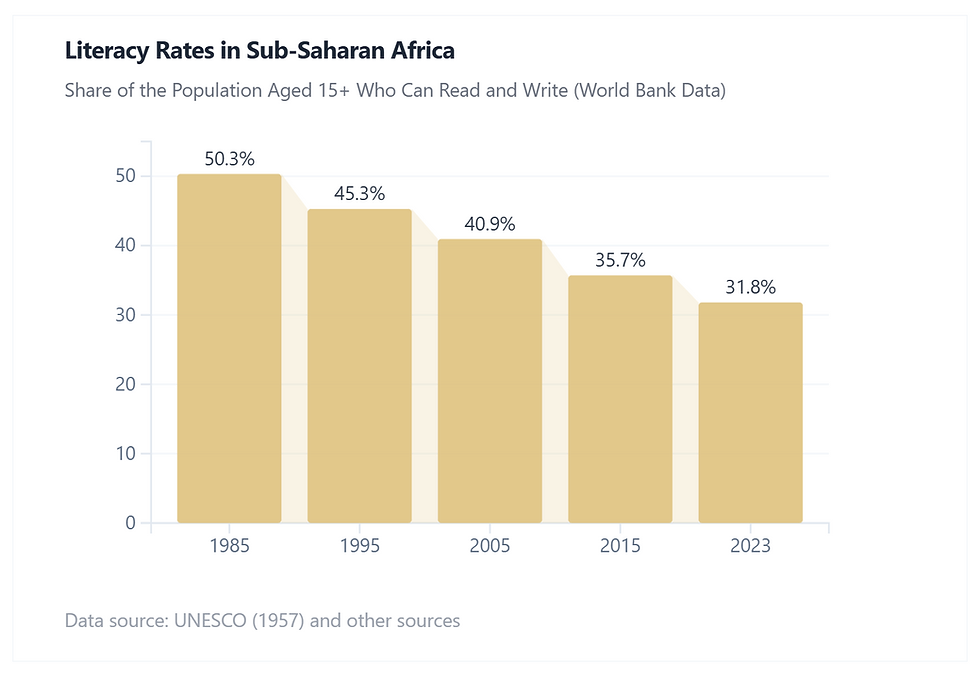📚Sub-Saharan Africa’s Uneven Journey in a Reading World
- Timothy Pesi
- Jun 26
- 2 min read
In the grand library of human progress, literacy is the index page. It tells us who’s ready to read the future and who’s still decoding the alphabet soup of systemic neglect. Globally, we've made impressive strides—an 87% literacy rate in 2023 is not just a statistic, it's a testament to our collective leap forward. But amid the rising tide of global enlightenment, Sub-Saharan Africa is still wading knee-deep in a swamp of educational disparity.
Let’s flip open the data and see what the numbers whisper.
📉 The Long, Slow Climb: Sub-Saharan Literacy Trends
From the chart, we see an encouraging—yet sluggish—decline in illiteracy in Sub-Saharan Africa. In 1985, over 50% of adults aged 15 and above could neither read nor write. Fast forward to 2023, and that figure now stands at 31.8%.
Yes, it's progress. But in the same breath, it means nearly 1 in 3 adults in the region still cannot engage with the basic tools of modern knowledge. A pencil revolution? More like a tentative scribble.
🌍 Meanwhile, on Planet Earth…
Now, let’s pan out to the second chart: the global view.
In 2023, a mere 12.6% of the world's adult population remains illiterate. That means 87.4% are equipped with the literacy skills to read road signs, fill out job applications, or dare we say—read this very blog. The global trend shows a dramatic flip since 1900, where illiteracy once dominated the horizon. Compare that to Sub-Saharan Africa’s 31.8%—and the literacy gap yawns wide open like a censored page in a history textbook.
🧩 So, What’s the Missing Piece?
It’s not just about more schools. It’s about:
Investment in teacher training and retention
Access to primary education in rural areas
Bridging gender gaps—where girls often drop out before acquiring literacy
Curriculum modernization that aligns with both culture and opportunity
Global literacy campaigns have proven what’s possible. But Sub-Saharan Africa’s challenge isn’t capability—it’s capacity and commitment.
📖 A Cautionary Epilogue
To read or not to read—that shouldn’t be a question in 2025. But for millions in Sub-Saharan Africa, it still is. While the world turns pages, parts of Africa are still staring at blank ones. A global literacy rate of 87% is a victory dance. But we can’t celebrate on a fractured floor. Because real progress isn’t a high average—it’s a low inequality.
Let’s ensure every region has not just a seat at the table, but a copy of the menu they can read.
🖋️ Literacy isn't a luxury. It's the fine print of freedom.




Comments